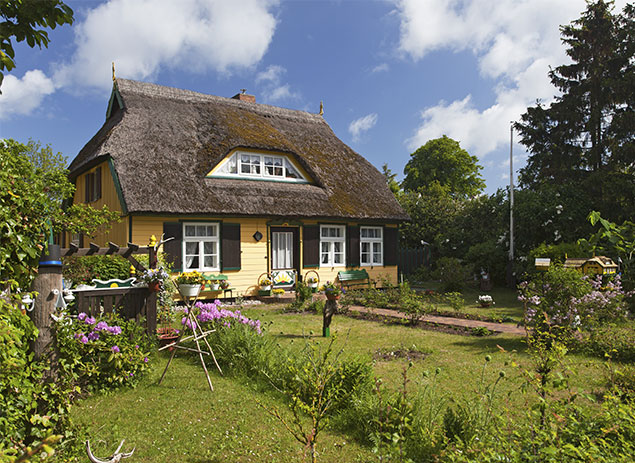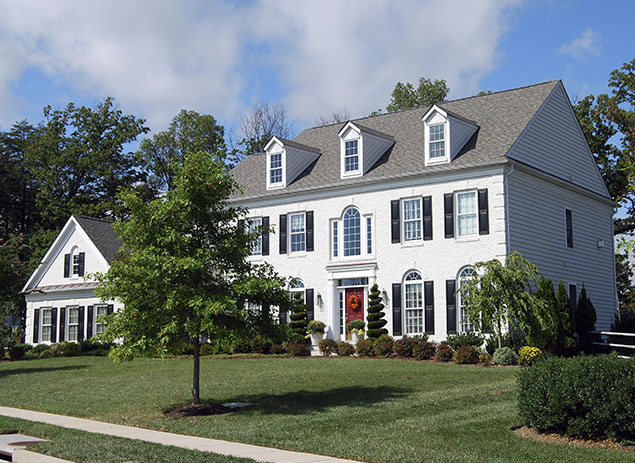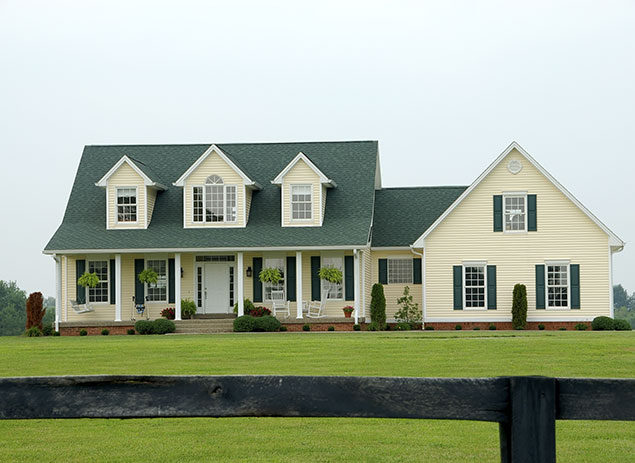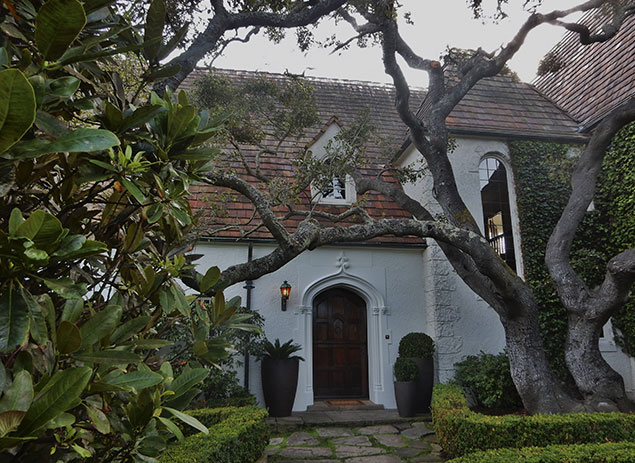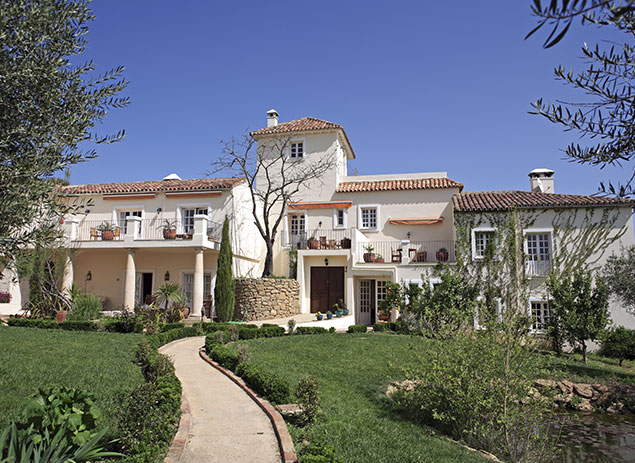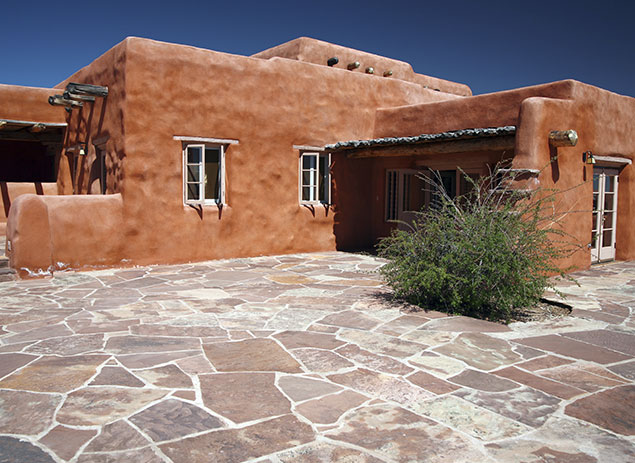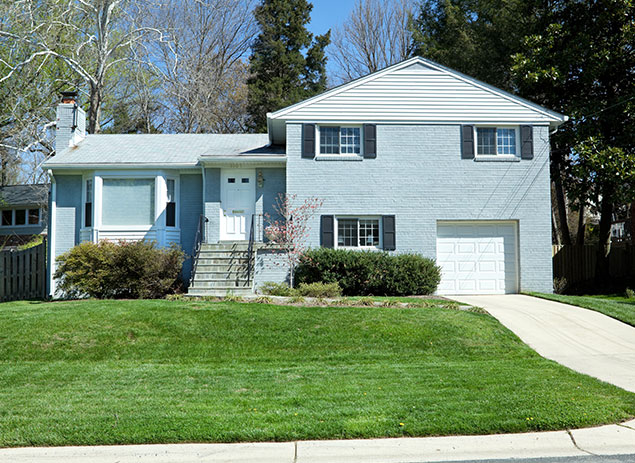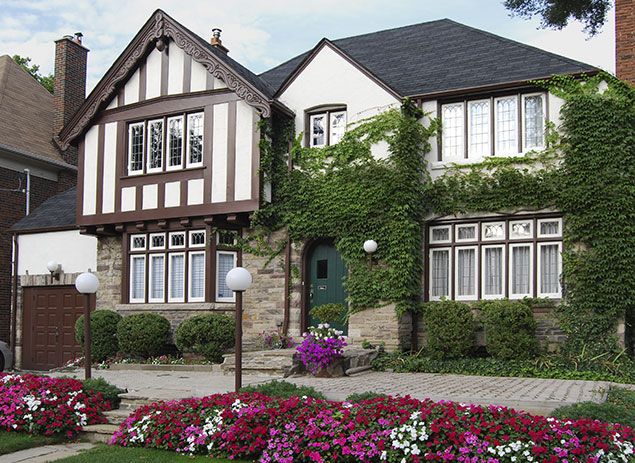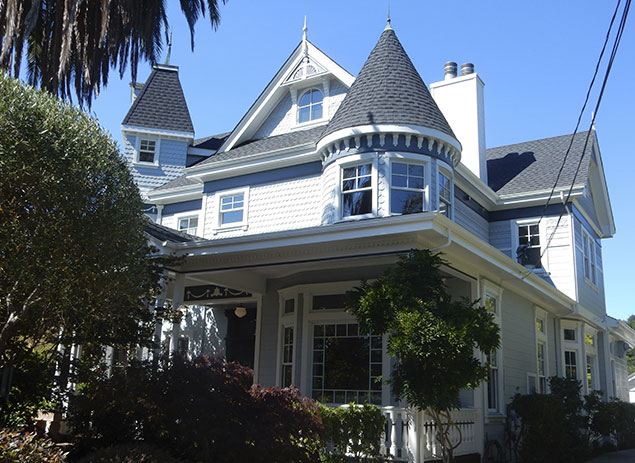
Architectural Styles
Bungalow
These narrow, rectangular one and one-half story houses originated in California during the 1880s as a reaction to the elaborate decoration of Victorian homes. Bungalows have low-pitched gabled or hipped roofs and small covered porches at the entry. The name “bungalow” had its origins in India, where it indicated a small, thatched home.
Cape Cod
Some of the first houses built in the United States were Cape Cods. The original colonial Cape Cod homes were shingle-sided, one-story cottages with no dormers. A 20th-century Cape Cod is square or rectangular with one or one-and-a-half stories and steeply pitched, gabled roofs. It may have dormers and shutters. The siding is usually clapboard or brick.
Colonial
America’s colonial period encompassed a number of housing types and styles. However, when we speak of the Colonial style, we often are referring to a rectangular, symmetrical home with bedrooms on the second floor. The double-hung windows usually have many small, equally sized square panes.
Contemporary
You know them by their odd-sized and often tall windows, their lack of ornamentation, and their unusual mixtures of wall materials–stone, brick, and wood, for instance. Architects designed Contemporary-style homes (in the Modern family) between 1950 and 1970, and created two versions: the flat-roof and gabled types. The latter is often characterized by exposed beams. Both breeds tend to be one-story tall and were designed to incorporate the surrounding landscape into their overall look.
Cottage
Cottages originate from the word “cotters.” Cotters were European peasant farmers in the Middle Ages who lived in this style of home. A cottage-style house typically refers to a small home, made of stone or wood siding. It features a curved entryway, gravel or brick front walkway and brighter exterior colors. Today, flowers typically adorn the entryway creating beautiful curb appeal.
Craftsman
Popularized at the turn of the 20th century by architect and furniture designer Gustav Stickley in his magazine, The Craftsman, the Craftsman-style bungalow reflected, said Stickley, “a house reduced to it’s simplest form… its low, broad proportions and absolute lack of ornamentation gives it a character so natural and unaffected that it seems to… blend with any landscape.” The style features overhanging eaves, a low-slung gabled roof, and wide front porches framed by pedestal-like tapered columns. Material often included stone, rough-hewn wood, and stucco. Many homes have wide front porches across part of the front, supported by columns.
Dutch Colonial
This American style originated in homes built by German, or “Deutsch” settlers in Pennsylvania as early as the 1600s. A hallmark of the style is a broad gambrel roof with flaring eaves that extend over the porches, creating a barn-like effect. Early homes were a single room, and additions were added to each end, creating a distinctive linear floor plan. End walls are generally of stone, and the chimney is usually located on one or both ends. Double-hung sash windows with outward swinging wood casements, dormers with shed-like overhangs, and a central Dutch double doorway are also common. The double door, which is divided horizontally, was once used to keep livestock out of the home while allowing light and air to filter through the open top. The style enjoyed a revival during the first three decades of the 20th century as the country looked back with nostalgia to its colonial past.
Farmhouse
The term “farmhouse” doesn’t refer to style, but rather to location and function. They were originally built on rural land with an emphasis on an agrarian lifestyle. Many farmhouses were modeled after popular architectural styles at the time they were built, such as Victorian and Colonial. However, farmhouses were built for need rather than design, often featuring functional porches as a transitional space creating a much more informal and inviting exterior.
French Provincial
Balance and symmetry are the ruling characteristics of this formal style. Homes are often brick with detailing in copper or slate. Windows and chimneys are symmetrical and perfectly balanced, at least in original versions of the style. Defining features include a steep, high, hip roof; balcony and porch balustrades; rectangle doors set in arched openings; and double French windows with shutters. Second-story windows usually have a curved head that breaks through the cornice.
Georgian
Befitting a king–in fact, the style is named for four King Georges of England–Georgian homes are refined and symmetrical with paired chimneys and a decorative crown over the front door. Most surviving Georgians sport side-gabled roofs, are two to three stories high, and are constructed in brick. Georgian homes almost always feature an orderly row of five windows across the second story.
Italianate
Italianate homes, which appeared in Midwest, East Coast, and San Francisco areas between 1850 and 1880, can be quite ornate despite their solid square shape. Features include symmetrical bay windows in front; small chimneys set in irregular locations; tall, narrow, windows; and towers, in some cases. The elaborate window designs reappear in the supports, columns, and door frames.
Mediterranean
Influenced by the area from which it’s named, this style became extremely popular in the U.S. from 1918 to 1940. The homes were modeled after the hacienda style, with red tile roofs, arches and plaster surfaces. This style is very popular again and features a lot of the original design elements, including porticos, balconies and ornamental details such as heavy wooden doors and multicolored tiles.
Pueblo
Taking its cues from Native American and Spanish Colonial styles, chunky looking Pueblos emerged around 1900 in California, but proved most popular in Arizona and New Mexico, where many original designs still survive. The style is characterized by flat roofs, parapet walls with round edges, earth-colored stucco or adobe-brick walls, straight-edge window frames, and roof beams that project through the wall. The interior typically features corner fireplaces, unpainted wood columns, and tile or brick floors.
Queen Anne
A sub-style of the late Victorian era, Queen Anne is a collection of coquettish detailing and eclectic materials. Steep cross-gabled roofs, towers, and vertical windows are all typical of a Queen Anne home. Inventive, multistory floor plans often include projecting wings, several porches and balconies, and multiple chimneys with decorative chimney pots. Wooden “gingerbread” trim in scrolled and rounded “fish-scale” patterns frequently graces gables and porches. Massive cut stone foundations are typical of period houses.
Ranch
Sometimes called the California ranch style, this home in the Modern family, originated there in 1930s. It emerged as one of the most popular American styles in the 1950s and 60s, when the automobile had replaced early 20th-century forms of transportation, such as streetcars. Now mobile homebuyers could move to the suburbs into bigger homes on bigger lots. The style takes its cues from Spanish Colonial and Prairie and Craftsman homes, and is characterized by its one-story, pitched-roof construction, built-in garage, wood or brick exterior walls, sliding and picture windows, and sliding doors leading to patios.
Spanish
Settlers from the Mediterranean fused design from Europe and Native America with their own to create a variety of home styles. Mission revival is one of the most popular, inspired by the Spanish churches built by the missionaries in the early 20th century. They typically have clay roof tiles, arcaded porches, arched corridors, square pillars and bell towers, as well as quatrefoil windows that resemble flowers.
Split Level
A Modern style that architects created to sequester certain living activities–such as sleeping or socializing–split levels offered an multilevel alternative to the ubiquitous style in the 1950s. The nether parts of a typical design were devoted to a garage and TV room; the midlevel, which usually jutted out from the two-story section, offered “quieter” quarters, such as the living and dining rooms; and the area above the garage was designed for bedrooms.
Tudors
This architecture style was popular in the 1920s and 1930s and continues to be a mainstay in suburbs across the United States. The defining characteristics are half-timbering on bay windows and upper floors, and facades that are dominated by one or more steeply pitched cross gables. Patterned brick or stone walls are common, as are rounded doorways, multi-paned casement windows, and large stone chimneys. A subtype of the Tudor Revival style is the Cotswold Cottage. With a sloping roof and a massive chimney at the front, a Cotswold Cottage may remind you of a picturesque storybook home.
Victorian
Victorian architecture dates from the second half of the 19th century, when America was exploring new approaches to building and design. Advancements in machine technology meant that Victorian-era builders could easily incorporate mass-produced ornamentation such as brackets, spindles, and patterned shingles. These homes combine modern materials with 19th century details, such as curved towers and spindled porches.

